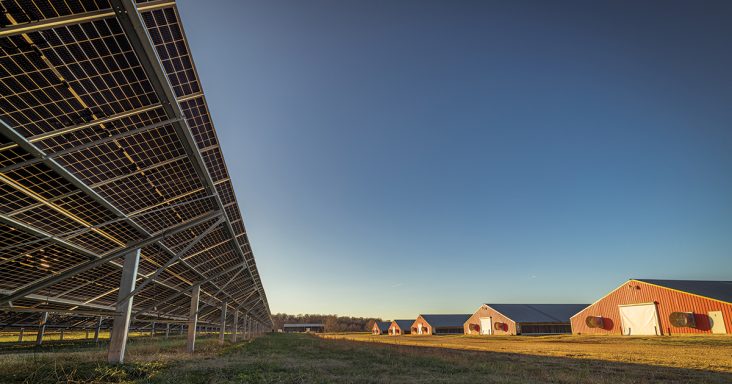NWA solar array is one of the largest of its kind
by December 18, 2022 10:36 am 2,046 views

One of the largest solar rrays of its kind will soon begin operating in northern Washington County. The array will provide electricity for a poultry farm with 10 chicken houses.
According to the company, North Little Rock-based solar energy company Seal Solar has nearly completed installing one of the largest solar arrays of its kind in the United States.
The 288.64-kilowatt DC array will generate power for Dixie Acres Farm, a poultry farm near Cincinnati in northwestern Washington County and south of Siloam Springs. It’s expected to be operational in January.
The solar array sits on 2.5 acres. The farm is 40 acres.
Cooper Wade, engineering and construction consultant for Seal Solar, said the array is designed as a single-phase application because of the available utility infrastructure in the area. The array needs a 1,200-amp service onsite to allow the energy it generates to be distributed to the grid. This service size requires a 250 kilo-volt-ampere (kVA) transformer.
“To our knowledge, this makes this solar project one of the largest of this kind that has been done,” Wade said. “McCalmont, our engineering firm, is a large national service provider. They are unaware of another project of this kind at this scale.”
Dan Schwieder, the owner of Dixie Acres Farm, expects to recoup the cost of his solar investment in less than three years. He anticipates saving $24,000 annually in energy costs.
“Fundamentally, it’s a business decision,” said Schwieder, who also works in farm real estate brokerage and is familiar with large-scale agricultural projects. “I don’t know if I’ve been through very many projects of this magnitude with this much simplicity. Now, that speaks volumes to me.”
Nate Bell, a commercial solar consultant for Seal Solar, highlighted that when poultry growers switch to solar power, “it turns electricity expenses from an unknown to a known cost for the next three decades or more.”
“Not only does going solar provide cost stability, but it also provides immediate improvement in cash flow,” Bell added. “With grants and other incentives that can cover nearly 90% of the project, it’s an easy decision for contract growers to choose solar energy.”
